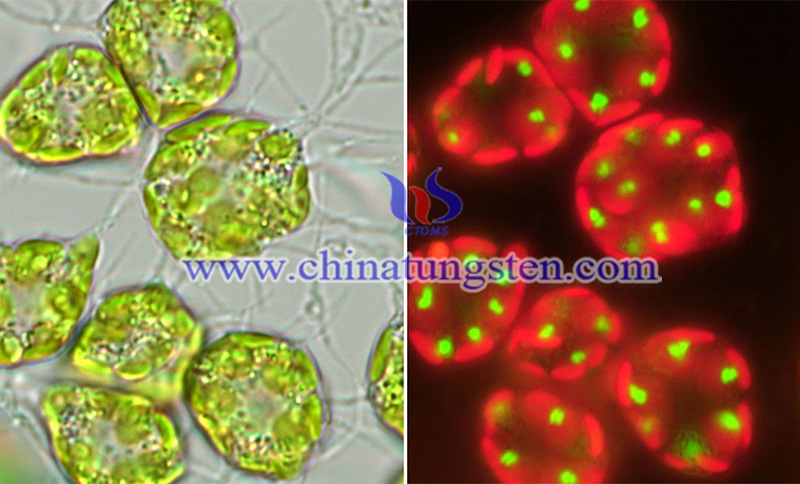Tungsten Particles Used in Genetic Tool to Unveil Secrets of Ocean Microbes
- Details
- Category: Tungsten's News
- Published on Friday, 10 April 2020 21:40
Tiny tungsten particles or gold particles coated with DNA could help genetic material get through the cell membrane, and the emerging genetic tool is expected to unlock the secrets of ocean microbes. Fifty percent of the world's oxygen comes from ocean microbes. However, these tiny marine organisms remain largely a mystery in the scientific community. A study published in Nature Methods on April 6 said that with the efforts of more than 100 researchers worldwide, scientists have found a way to unveil the genomes of a handful of these organisms through genetically engineering their DNA.
Angela Falciatore, a marine biologist with CNRS, the French national research agency, at Sorbonne University, who was not involved with the study, said the work "will propel advances in plankton biology." She said that these developments would help to understand the early evolution of life, and potentially even lead to new antibiotics.
Marine plankton are the invisible life that color our oceans blue, green, and even red at times. Some plankton are single-celled structures called protists. They use light to transform carbon dioxide into oxygen like plants. Protists not only provide the oxygen we need for breathing, but they are also food for large plankton, which in turn become food for invertebrates and fish.

Algae biologist Peter Kroth at the University of Konstanz, Germany, who was not involved in the study, said: "There is a wealth of unexplored protists with a huge impact on these ecosystems.
In 2015, the Gordon and Betty Moore Foundation (a philanthropic organization that supports basic research about microbes and the environment) provided researchers with $8 million in research funding to close this knowledge gap. In a series of studies on animals, plants, yeast, and bacteria, have shown that when scientists modify an organism's genes, they uncover important clues to how these cellular genes work.
Eventually, the researchers gathered their expertise and insights and picked 39 species to work on. Most of the researched objects are economically microbes that may have catastrophic consequences for the fisheries and recreation industry, such as protist-linked red tides, and some represent different branches of the protist family tree.
The researchers collected some microorganisms, mainly from coastal waters, then tried to cultivate each species, and finally tested different nutrients and temperatures to see what worked best.
To explore these genes, scientists had to try to get foreign DNA into them, which is a very bold attempt. They discovered that sometimes shooting tiny gold or tungsten particles coated with DNA was the most effective genetic tool at getting the DNA through the cell membrane. Other times, electricity is used to penetrate the cell membrane to make the cell membrane leak. In this way, DNA can be squeezed in. The next step was to make this part of the DNA a part of the cell's genome or at least be translated into.
After the cell's genes got in and started to make ocean microbes. Sometimes the protist's defenses will eliminate it, in other cases, the enzymes commonly used in genetic engineering do not work at low temperatures, and researchers have to find new enzymes to complete the work. Falciatore said: "No single group in the world could have faced these technical challenges alone."
The researchers added genes to 13 species in total, including a protist that kills fish with its toxins, and one that also infects mollusks and amphibians.
Genes that do the same thing in distantly related protists likely represent genes already in existence in an early ancestor, shedding light on protist evolution. Kroth said: "My laboratory will definitely benefit."
Gold particles or tungsten particles used in the new genetic tool promise to unravel the secrets of ocean microbes. This work helps to unlock how protists work. By modifying their DNA and monitoring the behavior, function, or biochemical changes of protists, researchers are beginning to understand the role of these genes. For example, genes that affect the resistance of protists to bacteria may encode proteins, thereby creating new antibiotics for humans.
- Tungsten Manufacturer & Supplier, Chinatungsten Online: www.chinatungsten.com
- Tungsten News & Prices of China Tungsten Industry Association: www.ctia.com.cn
- Molybdenum News & Price: news.molybdenum.com.cn
- Tel.: 86 592 5129696; Fax: 86 592 5129797; Email: sales@chinatungsten.com



 sales@chinatungsten.com
sales@chinatungsten.com